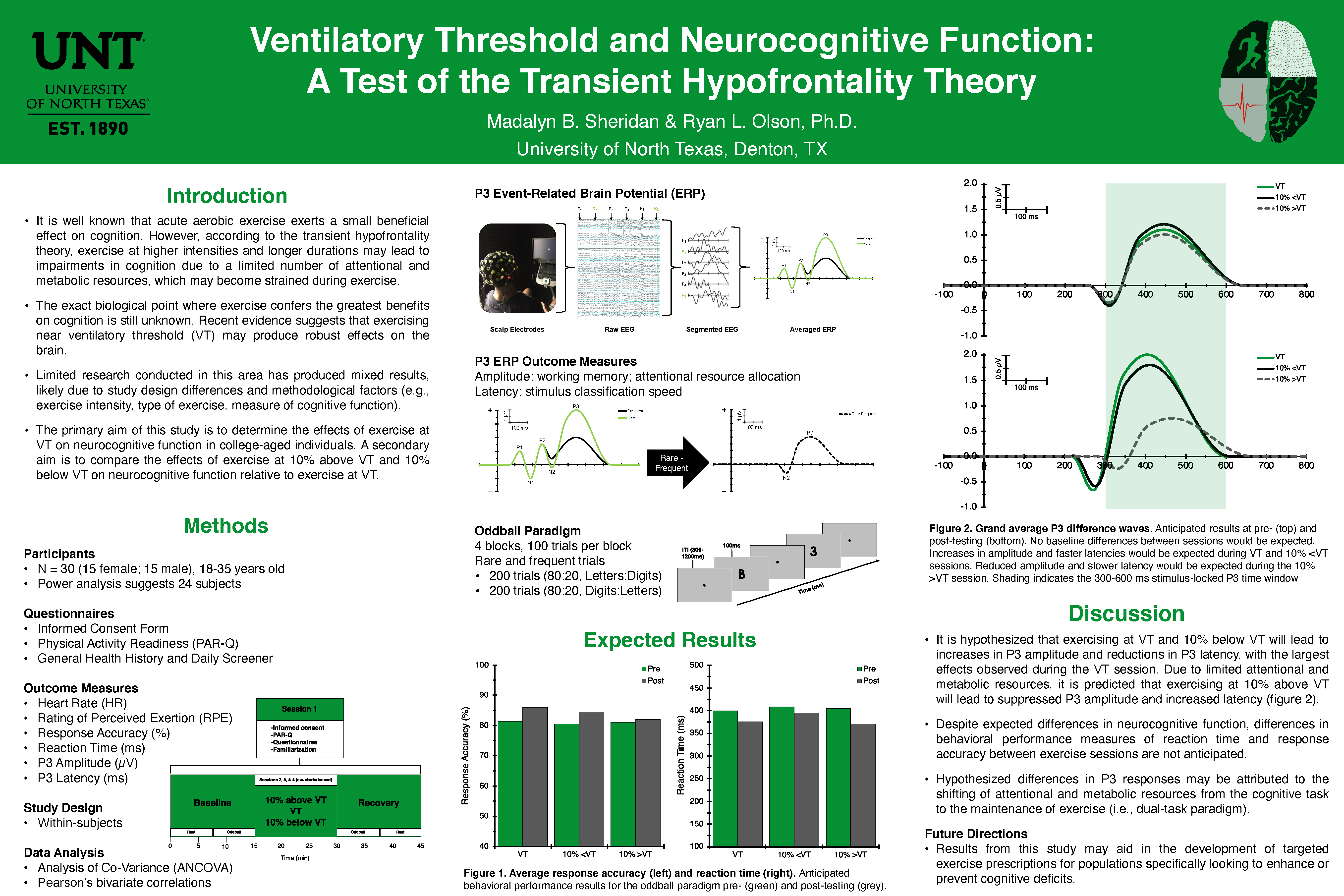First Name:
MadalynLast Name:
SheridanMentor:
Dr. Ryan L. OlsonAbstract:
It is well-known that exercise is beneficial for cognition. While the exact biological point where exercise no longer confers cognitive benefits is unknown, some suggest it’s near ventilatory threshold (VT). It is hypothesized that at VT, the demands of exercise exceed the capability of the body, and efforts devoted to cognition are redirected to maintaining basic physiological processes. Examining changes that occur near VT is important for identifying the neurobiological mechanisms that lead to improved cognition. Thus, the primary aim of this study is to determine the effects of exercise at VT on neurocognitive function. The secondary aim is to compare the effects of exercise at 10% above VT and 10% below VT on neurocognitive function relative to exercise at VT. Thirty (15 female; 15 male) subjects between the ages of 18-35 years old will be recruited for the study. Subjects will visit the lab on four separate occasions. The first day of testing will be used to identify VT and provide subjects with familiarization to the cognitive task. Subjects will then be counterbalanced to exercise sessions at VT, 10% below VT, and 10% above VT on days two, three, and four. Measures of response accuracy, reaction time, P3 amplitude, and P3 latency will be assessed pre- and post-exercise sessions. It is hypothesized that exercising at VT and 10% below VT will lead to increases in P3 amplitude and reductions in P3 latency, with the largest effects observed following the VT session. It is also predicted that exercising at 10% above VT will lead to suppressed P3 amplitude and increased latency. Differences in behavioral performance measures of reaction time and response accuracy are not anticipated. Results from this study may aid in the development of targeted exercise prescriptions for populations specifically looking to enhance or prevent cognitive deficits.Poster:





